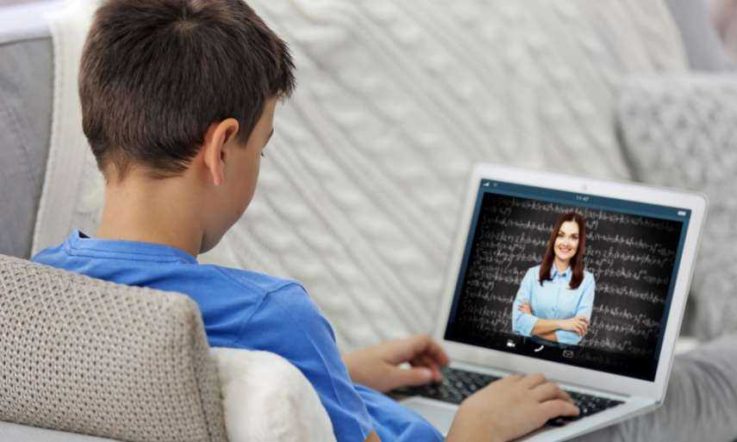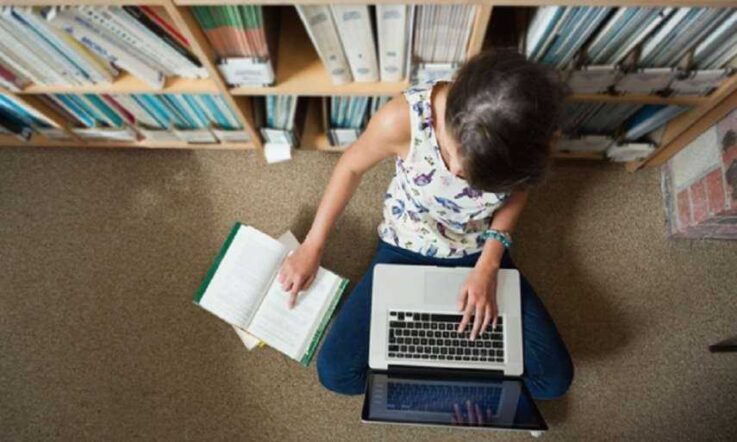If you want to implement a flipped learning approach that makes a successful impact then you might want to start by taking a look at your school's homework culture.
That's one of the messages to come out of a research report into a small scale UK study on the teaching method. In flipped learning, homework time is used to introduce new concepts usually via digital resources and class time is given over to follow-up activities, where students can practice and apply what they've learned with support from the teacher.
Students not completing the homework set, and therefore arriving at the lesson unprepared for the planned activities, is highlighted in the report as a barrier to the successful implementation of the approach. 'With direct instruction of new content taking place as homework, reliable completion of this activity is key to the success of flipped learning,' the report's authors say.
‘Some schools had an existing culture of high expectations for completion of homework and, in these cases, this was an enabling factor for successful implementation.
'It is strongly advised that teachers wishing to implement a flipped learning approach review the current culture of homework in their schools, and consider the steps they may need to take to ensure a high level of completion.'
The study, undertaken by the National Foundation for Educational Research (NFER) and independent charity Nesta in 2014 and 2015, worked with nine schools in England and Scotland. Each school piloted the flipped learning with Key Stage 3/Secondary 1-3 students (aged 11 to 14) over the course of a term for a maths topic. A comparison group taught maths using a traditional approach. All the teachers involved in the study were experienced maths teachers.
'Where flipped learning was reported to have worked practically, case-study interviewees said it had had a beneficial effect on student learning. The approach encouraged students to take responsibility for their learning, to learn at their own pace, to deepen their knowledge and understanding, and to make faster progress than would otherwise have been the case.'
The study also found that, where flipped learning worked best, teachers were able to adapt the approach to tackle challenges and barriers in their own school context. They were also open to taking on the role of facilitator, mentor and coach, rather than instructor. 'Key to the delivery of flipped learning is teachers delegating responsibility for initial instruction on concepts/topics to online and digital resources ...'
The schools involved approached the method in different ways. For the direct instruction outside class, some teachers selected resources that would offer stretch challenges while others preferred to scaffold and guide the learning. Teachers were asked to use Khan Academy resources mapped to the curriculum, but some chose other digital resources that they felt better suited their students' needs.
At the end of the pilot, most educators said they'd continue using flipped learning, alongside other teaching strategies, or would integrate elements such as online resources into a traditional approach. Some planned to embed it in selected topics, while others were looking to extend it across their faculty.
Impact of flipped learning
Assessing the impact of flipped learning, the report's authors say in successful instances, teachers said students arrived at the lesson better prepared and with a higher level of understanding. This freed up more time in the lesson for students to practice and apply what they'd learned, and for higher level discussion, collaboration, individual support (including for those struggling or who required extension activities) and independent learning.
'Undoubtedly, those that had learned [and accessed the video instruction at home], we could push on and give them extension activities and could have individual-based discussion with them about what they’d done and deepen their understanding…,' one teacher remarked.
Specifically for maths learning, there was a reported increase in student engagement, confidence, independent learning skills, knowledge and understanding, as well as progress.
'An important impact of flipped learning for some students appeared to be faster progress and improved attainment. In some cases, quicker progress was related to students spending more time on their homework and going beyond what had been set ...,' the report notes.
'Both teachers and students reported moving at a faster pace within lessons and moving on to more advanced work. This was corroborated in lesson observations in which researchers observed students in flipped learning classes moving more quickly onto task than students in the comparison group.'
Barriers to success
The report also outlines several challenges that could limit the impact of flipped learning: access to technology; identification of appropriate resources for homework; students not completing the homework; and teachers and students preferring face-to-face initial instruction.
'Teachers reported that students who struggled with mathematics had not benefited as much from flipped learning. Some of these students had poor organisation skills and would not look at the videos for homework, whilst others who did would get frustrated when they could not understand something and were unable to ask a teacher.'
Some students simply preferred to use pen and paper for maths work, rather than digital technology. Poor home internet access resulted in two pilot schools running 'managed homework sessions' in school time in the computer suite, or including the videos in a carousel of activities during lesson time.
On the topic of homework, several teachers said they were 'double planning' for flipped and traditional lessons in the event that students came unprepared, expecting to be 'bailed out' by classmates.
Tips for implementing flipped learning
The report offers some top tips for schools, including:
- Think about home access to technology, alternative access during school time, use of smart phones, laptop loans and how to involve parents in homework culture;
- Choose appropriate video/digital resources. Those that give teacher feedback on activities completed by students and progress are useful for planning the follow-up lessons;
- Ensure the school has a strong homework culture/policy before using flipped learning, or think about how to offer access to the resources at lunchtimes;
- Consider the academic ability of your students and their capacity to work independently. Some may need more scaffolded learning, support from peers, or a guided introduction to online resources from the teacher;
- Be flexible - plan your lessons in response to student feedback and progress, and remember flipped learning may not always be the best method for every topic or exercise.
References
Straw, S., Quinlan, C., Harland, J. and Walker, M. (2015). Flipped Learning - Research Report. London: Nesta.
To download a copy of the report, visit the NFER website.



